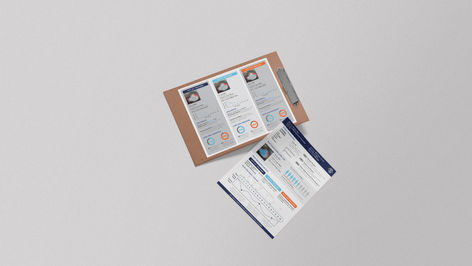
overview
PROJECT
SimBioSys
TYPE
Design Research / UX Design / Experience Design
CONTEXT
Senior Design Strategist
Siebel Center for Design
University of Illinois Urbana-Champaign
How might we BUILD BREAST CANCER PATIENTS' confidence in their treatment decision?
Our partner, SimBioSys, is a precision cancer care company in Research Park committed to delivering technology that assists in clinical decision making. Their flagship TumorScope tool uses key inputs determined by the provider to give treatment options to cancer patients that are customized to their unique cancer diagnosis. Their predictive, 3D models integrate genetic data collected during diagnosis into personalized simulations of the patient's 3D tumor, tests a variety of drugs/therapies prior to the treatment decision, and identifies which show the best promise and why a treatment will or won't be effective. By providing more information on each treatment option, SimBioSys empowers patients to feel more confident about the decisions regarding their treatment options. Our team was brought into co-design these powerful treatment navigation tools alongside and with breast cancer survivors to ensure the tool would be truly patient-centered.
All interviewee information has been privatized and pseudonyms have been used.

my role
SimBioSys asked the SCD team to take a human-centered look at their computational predictive models and the resources that it provides to breast cancer patients in order to create a more patient-friendly system of tools. How might we create effective, efficient, and empathic presentations of the SimBioSys model that physicians feel comfortable using and breast cancer patients can feel confident in understanding? I co-led a team with a fellow Senior Design Strategist and 2 student interns in conducting human-centered design research with breast cancer survivors, advocates, and healthcare providers. From there, we reviewed and extracted meaning from our findings, synthesized insights, and presented opportunity areas to SimBioSys at the conclusion of the project. The scope of this project all took place during social distancing measures for COVID-19. Our team led the entirety of our interviews and co-creation sessions over Zoom.
our response
During Phase 1 we spoke to 8 breast cancer survivors to better understand their experience learning about their diagnosis and treatment options to inform our redesign of the patient resource sheet. After several conversations and iterations of the design - each of the 11 continuously refined versions reviewed by at least 2 survivors - we landed on a final design which we presented to the SimBioSys team. In phase 2, we focused on the provider-facing side of the tool. During this phase, we spoke to a number of providers to understand their needs while using this type of tool. We then implemented their recommendations and needs and created a redesign to their online platform.
We presented our redesign recommendations to the SimBioSys team, which they were very excited about, the next day they began implementing these changes.


















